ROBINS : Erithacus rubecula
Every gardener's friend. Get busy with a spade and a robin is sure to appear ready to look for any morsels so dislodged - worms, seeds, fruits, insects and other invertebrates. They are a common sight and often conspicuous in winter when other birds are not. Its red chest (actually more dark orange) makes it a popular Christmas emblem - a symbol of goodwill in spite of them being very territorial and quick to drive away competitors. You may even witness some squabbles between males.
How do all robins know to follow you around while gardening? The RSPB has an interesting theory : They evolved as a woodland species that benefitted from a relationship with wild boar. This is how they used to get their calories – by following boar around and taking advantage of the fact those animals uproot and turn over the soil with their snouts whilst they foraged. Robins would pick up the little soil invertebrates that were too small for the boar to be interested in. We came along as an alternative when the wild boar disappeared.
Males and females look identical although young birds have no red breast and are spotted with golden brown and can be confused with other species.
We do not have the same numbers of robins as south of the border, but they are nevertheless quite common around West Dunbartonshire.
The Woodland Trust tells us : The breeding season usually begins in March, although if the winter has been mild it can begin as early as January. The female robin builds a cup-shaped nest using moss, hair, grass and dead leaves, somewhere on or close to the ground. Robins begin laying their eggs between mid-April and mid-August, and a clutch is made up of around 4–6 eggs. Chicks hatch after around 13 days. The chicks fledge approximately two weeks later.
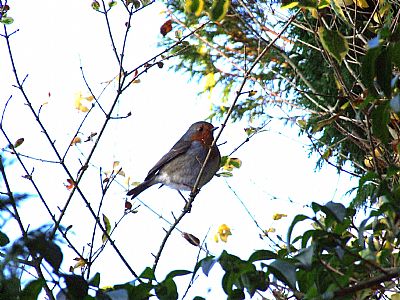
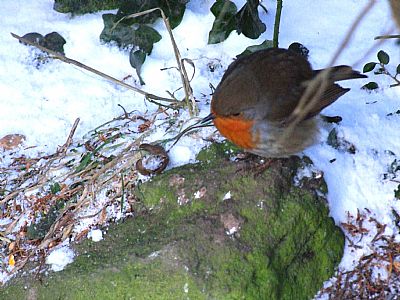
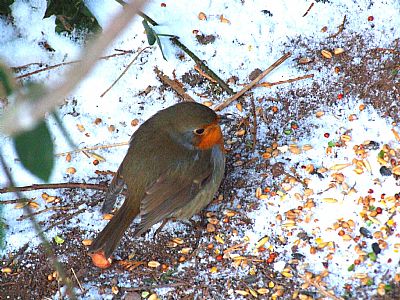
Robins will invariably come over while you are gardening in the hope of finding an exposed worm.
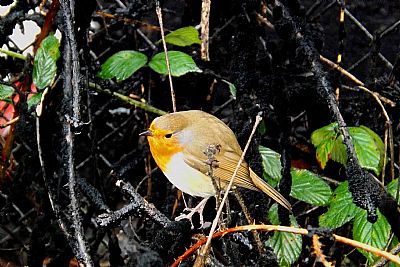
That same instinct leads them to follow you even when you are unlikely to dislodge a tasty morsel...just in case. This one follows walkers on the upper Leven towpath, while keeping a safe distance within the brambles.
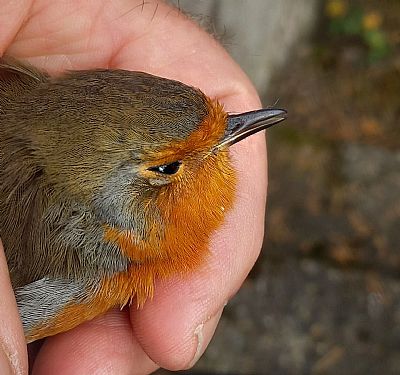
This robin was caught and brought into the house by a cat. But it was lucky. It was shaken and shocked, but not harmed and after a short period in a secluded spot, it was able to fly off again.
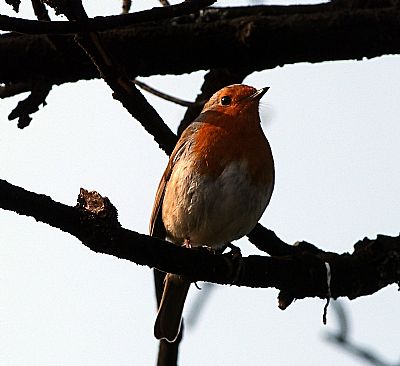
A robin chirps in the first sunshine of spring in March.
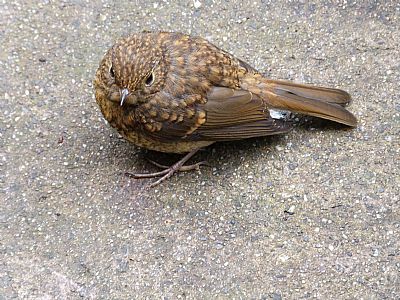
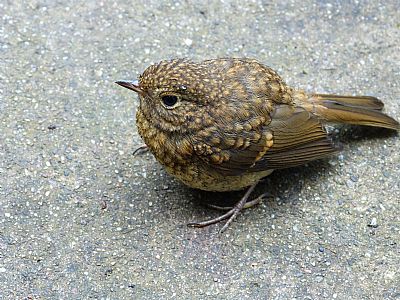
This is an almost fully grown robin although it has not yet got its adult plumage and cannot fly. Yet another youngster that has ventured from the nest too soon.
RSPB : https://www.rspb.org.uk/birds-and-wildlife/wildlife-guides/bird-a-z/robin/
WOODLAND TRUST : https://www.woodlandtrust.org.uk/trees-woods-and-wildlife/animals/birds/robin/

